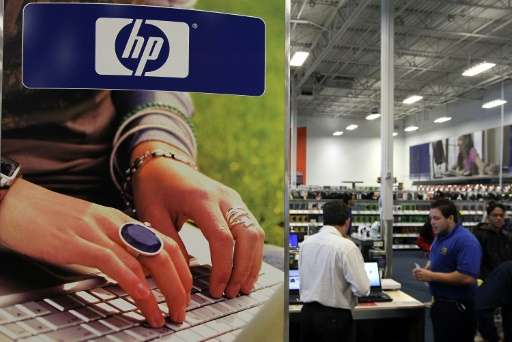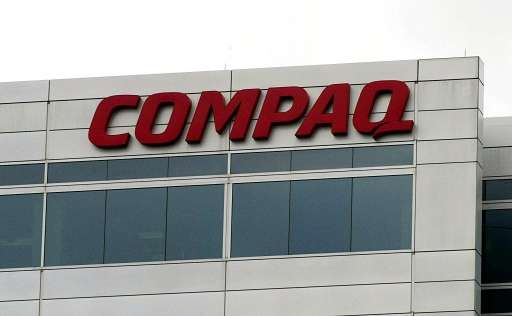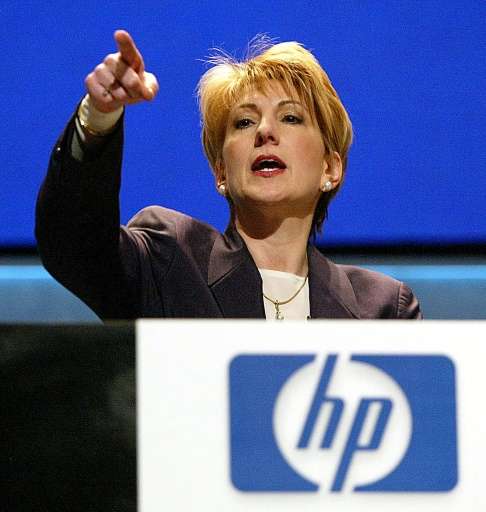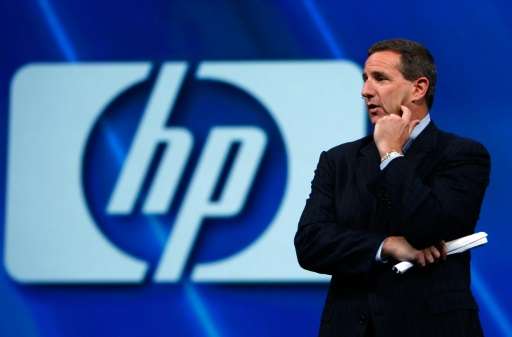Silicon Valley granddaddy HP readies breakup

Seventy-seven years after Bill Hewlett and Dave Packard began tinkering in a Palo Alto garage, the company that became the foundation for Silicon Valley is breaking up.
Hewlett-Packard on Sunday officially splits into two entities, opening a new chapter for the US technology legend.
The computer colossus is being divided into HP Enterprise, focusing on software and business services, and HP Inc, which will keep the personal computer and printer operations.
The aim is to develop a sharper focus both for the enterprise unit and the PC-printer division that made it a household name but has become fiercely competitive and less lucrative in recent years.
The new structure splits off the computer arm that became for a time the world's biggest PC maker following the HP 2002 acquisition of Compaq.
The controversial deal was engineered by then-chief executive Carly Fiorina—now running for the Republican nomination for president.
Tom Bittman, analyst at the research firm Gartner, said the current tech landscape calls for this approach, with flexibility more important than size.
"The market right now needs to move in this kind of direction, more focused, and more nimble, than in Carly Fiorina era, when competing with IBM, not Amazon, was critical," Bittman told AFP.
It remains to be seen whether the breakup will revitalize a company that has been in a defensive, restructuring mode for several years as it lost ground to rivals like Chinese PC maker Lenovo, and as tech sector leadership was taken over by mobile-focused Apple and Google.
"A split in itself is not a good or bad thing, it's what they do with it," Bittman said.

The new HP Enterprise will be led by company CEO Meg Whitman and the PC business by Australian native HP executive Dion Weisler. Both firms begin trading independently Monday on Wall Street.
Faded star
HP has long had a special place in the hearts and minds of Silicon Valley.
Founded by two Stanford University graduates, the company has been a major benefactor to the school seen a source of many innovative startups, including Google.
The garage where the company began has been designated a California historic landmark.
HP also led a number of workplace innovations including flexible schedules and the open-space office.
But today, the company is often seen as a dinosaur overtaken by younger, more dynamic startups.
The company has been in transition since dumping Fiorina in 2005.
Fiorina's successor Mark Hurd left in 2010 amid allegations of sexual harassment.

The next CEO, Leo Apotheker, was set to get rid of the PC business before he departed. But he led a $10 billion deal for Autonomy that became the object of lawsuits and probes into accounting irregularities at the British software firm.
The market value of HP today is roughly $50 billion—less than half of its annual revenues—compared with nearly $300 billion for Facebook, $500 billion for Alphabet and almost $700 billion for Apple.
Some on Wall Street parlance see opportunity in the breakup because HP's stock has been beaten down by concerns about its ability to compete.
The breakup into two separate companies "will unlock value for shareholders, as it allows each separate company to better focus on their core markets," said Deutsche Bank analyst Sherri Scribner in a research note.

Peter Burris at Forrester Research said the new structure offers an opportunity after numerous missteps by the company.
"Compaq was a portfolio of a lot of underperforming companies. It didn't serve HP's shareholders and customers as well as it might have," Burris said.
"History has shown that HP could have spent its time differently."
More recently, Burris said the company "has been showing signs of life on the execution front" but "it has to dramatically accelerate its execution and get the job done."
History of Silicon Valley pioneer Hewlett-Packard
Here are key dates in the history of Hewlett-Packard, seen as one of the founders of the Silicon Valley tech industry.
Palo Alto garage
1938: Stanford University graduates Bill Hewlett and Dave Packard, with $538 in working capital begin working on an audio oscillator in a Palo Alto garage at 367 Addison Avenue. The Walt Disney Co. buys eight of the devices for its acclaimed cartoon "Fantasia."
1939: The two founders formalize their partnership and flip a coin to decide on the name Hewlett-Packard.
1957: HP becomes publicly traded on the stock market.
1972: Launch of the HP-35, the first pocket scientific calculator. It is used aboard NASA spaceships and was named by Forbes ASAP as one of the 20 "all-time products" that changed the world.
1978: Bill Hewlett steps down as chief executive.
1980: HP launches its first personal computer, the HP-85, followed by its touchscreen computer the HP-150, in 1983, and its "portable" HP-110 in 1984.
1984: The HP LaserJet, the first laser printer for PCs, is launched and quickly becomes a star product.
1993: Dave Packard leaves as chairman of the board.
1999: Carly Fiorina is named CEO, becoming the first woman to head a Fortune 50 company. Its life sciences and instrument unit is spun off as Agilent Technologies in the largest Silicon Valley stock offering of the time.
Fight on Compaq
2002: HP becomes the world's largest PC maker after swallowing rival Compaq for $20 billion in a deal that Fiorina pushed through in a contested boardroom battle over the objections of scion Walter Hewlett.
2005: Fiorina is fired after the board views the Compaq deal as a mistake.
2008: Under CEO Mark Hurd, the company moves into services with a $13 billion deal for Electronic Data System. The deal is followed by 25,000 job cuts and HP's writedown in 2012 indicates it overpaid for EDS.
2010: Hurd steps down amid accusations of sexual harassment.
2011: CEO Leo Apotheker decides to get rid of the PC business. But he is fired before carrying out the plan, and his replacement, former eBay chief Meg Whitman, reverses course. But the company completes Apotheker's $10 billion acquisition of British software group Autonomy, a deal clouded by lawsuits and allegations of accounting irregularities at Autonomy.
2012: Whitman launches a major reorganization that eventually leads to 55,000 job cuts.
2013: HP is overtaken in the PC market by China's Lenovo, following its acquisition of the personal computer unit of IBM.
2014: HP unveils plans to split into separate companies, one for software and services, the other for printers and PCs.
2015: Ahead of the November 1 split, HP says the split will lead of another 30,000 job reductions.
© 2015 AFP



















